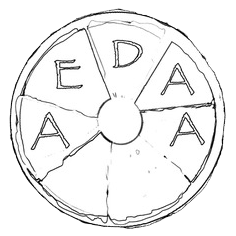History of The McCluskey Model
The McCluskey Model is based on 50 years of practice, research and video analysis of interaction, complemented by discussion and collaboration with some of the finest practitioners in the field, including Douglas Haldane, J D Sutherland, Dorothy Heard, Brian Lake, Virginia Satir and Yvonne Agazarian. The Model draws on Una McCluskey’s extensive experience as a social worker, psychotherapist and educator in the field of individual, couple, family, group and organisational psychotherapy.
In her early career Una had the privilege of not only working with Douglas Haldane and his innovative department of Child and Family Psychiatry in Fife, but through Douglas was introduced to Dr John Bowlby in the early 1970’s. Bowlby was a yearly visitor to the department on his way from London to the Isle of Skye for his summer holidays.
During the 1980’s whilst a lecturer in Social Work at the University of York, Una engaged in research looking at trans-generational patterns of relationship between couples which subsequently had an impact on children. She was particularly interested in how traumatic events in people’s lives could remain unprocessed and be passed down the generations. While undertaking this work, Una found a close resonance with the work that was happening in America by Mary Main and her colleagues. They were looking at whether one could see the sequelae in adults of what Mary Ainsworth (their PhD supervisor) had discovered in her research on 1 year olds (the Strange Situation test). They developed what became known as the Adult Attachment Interview (AAI).
In the 1990’s Una was introduced to Mary-Sue Moore by her colleague Celia Downes. Celia had trained in the AAI with Mary-Sue Moore and invited her to run a workshop at the University of York. It was at this workshop that Una first encountered the work of the infant psychologists Daniel Stern, Colwyn Trevarthen and many others who worked in the field of infant observation and used video recordings to document and analyse the interactions between infants and their parents or parent substitutes.
Mary-Sue showed videos of the work of Lynne Murray and Trevarthen. Una immediately saw the potential link between the way film was being used to pick up micro-movements in the interactive process between infants and adults and her work. For nearly 20 years she had been filming adult interaction and analysing micro-movements as a method of facilitating the development of skills for students on the Master’s degree course in Social Work.
So, the McCluskey Model is based on an understanding of the crucial importance of turn-taking in interaction and responsiveness to content, intention and emotional intensity. Without such an attuned response by one person to another there is no real connection, no satisfying experience and no sense of being met by the person who is communicating. At its heart the McCluskey Model is the theory of interaction for caregiving based on sensitivity, timing, attunement and immediacy of response. Una conceptualised this as Goal-Corrected Empathic Attunement (GCEA).
The McCluskey Model is a theory of interaction for practitioners in the caring professions, but it is not just that. The Model also draws heavily on the organisational work of Wilfred Bion, Eric Trist, Frederick Emery and Harold Bridger who pioneered the importance of being clear about task, structure, process and content in any endeavour that is work related.
The other crucial strand in the Model is the work of Heard and Lake who proposed the Theory of Attachment Based Exploratory Interest Sharing (TABEIS). Not only did they extended Bowlby’s theoretical formulation of attachment (which focused on the biologically based behaviour of careseeking on the part of the child and caregiving on the part of the parent, or parent substitute), but identified five other biologically-based motivational systems that work with careseeking and caregiving as a single unified process to enable not only survival but survival with well-being.
The McCluskey Model uniquely brings these three stands together – a theory of interaction, a model of organising the work so that exploration can be clear and uncluttered, and a focus for the exploration which is the organisation of the systems identified by Heard and Lake. In essence, the Model offers an opportunity for participants to identify, explore and in many cases resolve unprocessed experiences linked to the seven systems of Careseeking, Caregiving, Self-defence, Interest-sharing, Sexuality, their personally created External Environment and their Internal Environment. The unified operation of these seven systems together constitutes what Heard and Lake described as a Restorative Process, one that supports human development, well-being and vitality.

